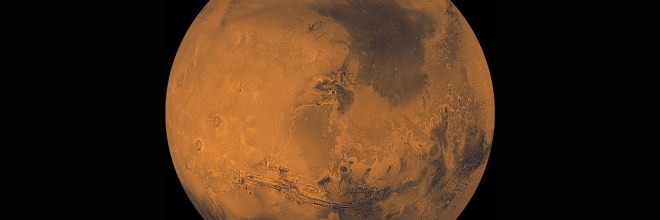The discovery of hydrogen in rocks an island chain off the west coast of Scotland suggests that similar processes may be taking place on Mars, and that it could potentially lead to the evolution of life on the Red Planet, according to new research published in the journal Astrobiology.
Professor John Parnell of the University of Aberdeen and his colleagues were studying rocks on the remote islands of Barra and Uist, which are part of the Outer Hebrides, when they discovered that those rocks experience tremors which may be capable of generating hydrogen in the crust.
According to The Independent and the Daily Mail, Mars also experiences these kinds of quakes, and they could produce conditions conducive to microbial life on the Red Planet. Hydrogen produced in this way could provide energy for simple subterranean organisms, the authors said.
In a statement, Parnell, a professor in the university’s School of Geosciences, explained that earthquakes “cause friction,” and that his team’s analysis of ancient rocks on the Outer Hebrides had “demonstrated how this creates hydrogen,” which he noted is “a fuel for simple microbes.”
“So microbes could live off hydrogen created in the Earth’s subsurface as a result of seismic activity,” the professor added. “This is a model that could apply to any other rocky planet, and on Mars there are so-called ‘Marsquakes’ that may produce hydrogen and therefore could feed life in the Martian sub-surface.”
Waiting until 2018 for additional ‘InSight’ into the findings
Even using conservative estimates of the current seismic activity on Mars, the researchers said, there would likely be enough hydrogen generated to be useable for microbes, thus enhancing the possibility that there are suitable habitats for biological organisms beneath the planet’s surface.
Their findings could make NASA’s upcoming InSight mission all the more interesting. InSight, which is currently scheduled to launch in 2018, will be studying seismic activity on Mars during the course of its time at the Red Planet, Parnell said. His team’s findings, he added, “will make those measurements all the more interesting.”
InSight will collect this data using an instrument known as the Seismic Experiment for Interior Structure (SEIS), which will drill into rocks and measure seismic resonance on the Red Planet. It is one of two primary tools that the robotic lander will be using, according to the Daily Mail. The other, the Heat Flow and Physical Properties Package (HP3), will make precise measurements of the planet’s rotation and heat loss.
InSight was originally supposed to launch next month before the discovery of a leak forced the US space agency to delay lift-off. Earlier this month, NASA announced that the new launch date would begin on May 5, 2018, with a Mars landing scheduled for November 26. The length of the delay is due to the fact that launch opportunities are driven by orbital dynamics, they explained.
—–
Image credit: NASA JPL



Comments